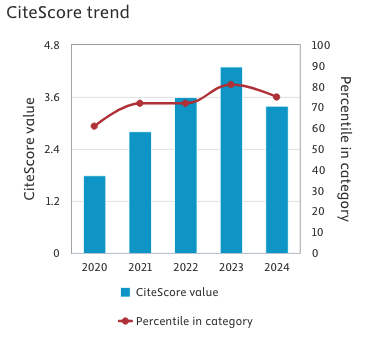Non-invasive administration of poractant-α in neonatal respiratory distress syndrome via a supraglottic device in the clinical practice in a second level neonatal unit: comparison of LMA® vs iGel® devices.
Non-invasive administration of poractant-α in NRDS
Keywords:
pulmonary surfactant, poractant-α, neonatal respiratory distress syndrome, supraglottic deviceAbstract
Non-invasive pulmonary surfactant (SF) administration for neonatal respiratory distress syndrome (NRDS) is a development of administration of SF. Administration of SF via a supraglottic device (SGD) has been shown to be effective. Here the results of administration of SF in NRDS in infants requiring oxygen and nasal-CPAP (n-CPAP) via two types of SGDs, LMA® vs iGel®, in a second level Neonatal Unit are reported in a retrospective study.
Results – Fourteen infants in the LMA®Group were matched with 21 comparable infants in the iGel® Group (g.a. ≥30 wks and b.w. ≥ 1,500 gr) presenting NRDS with fraction of inspired oxygen (FiO2) ≥ 0.25 – 0.6, requiring n-CPAP. All infants presented a significant improvement of PaO2/FiO2 ratio that was seen earlier in the iGel® Group vs the LMA® Group. There was no severe adverse effect during the maneuver with both SGDs. No baby died, No.2 required endotracheal intubation for a second dose of SF as by protocol, and No. 1 was transferred to a higher level of care.
Conclusion – Non-invasive SF administration via SGD has been done effectively at a second level Neonatal Unit and very early in the course of the disease therefore limiting transfer of the baby without complications with both SGDs. Improvement in gas exchange was more rapid in the iGel®Group. This result needs confirmation. In our experience iGel® was easier to use than LMA®.
References
2. Singh N, Halliday HL, Stevens TP, Suresh G, Soll R, Rojas‐Reyes MX. Comparison of animal‐derived surfactants for the prevention and treatment of respiratory distress syndrome in preterm infants. Cochrane Database of Systematic Reviews 2015, Issue 12. Art. No.: CD010249. DOI: 10.1002/14651858.CD010249.pub2
3. Ng EH, Shah V. Guidelines for surfactant therapy in neonates. Paediatr Child Health 2021;26:35-49. DOI:10. 1093/pch/pxaa116.eCollection 2021 Feb.
4. El-Gendy N, Kaviratna A, Berkland C, Dhar P. Delivery and performance of surfactant replacement therapies to treat pulmonary disorders. Ther Deliv 2014;4:10.4155/tde.13.72.
5. Berggren E, LiJedhal M, Winbladh B, Andreasson B, Curstedt T, Robertson B. Pilot study of nebulized surfactant therapy for neonatal respiratory distress syndrome. Acta Paediatr 2007;89:460-4.
6. Verder H, Robertson B, Greisen G, et al. Surfactant therapy and nasal continuous positive airway pressure for newborns with respiratory distress syndrome. Danish-Swedish Multicenter Study Group. N Engl J Med 1994;331:1051-5. PMID: 8090164.
7. Herting E. Less invasive surfactant administration. Early Hum Dev 2013;89:875-80. DOI 10.1016/j.earlhumdev.2013.08.023.
8. Smith PB, Ambalavanan N, Li L, Cotten CM, et al. Approach to infants born at 22 to 24 weeks' gestation: relationship to outcomes of more-mature infants. Pediatrics 2012; 129:e1508-16.
9. Trevisanuto D, Grazzina N, Ferrarese P, Micaglio M, Verghese C, Zanardo V. Laryngeal mask airway used like a delivery conduit for the administration of surfactant to preterm infants with respiratory distress syndrome. Biol Neon 2005; 87:217-20.
10. Parmigiani S. Non-invasive surfactant administration in newborn babies. Infant 2011;7:112-15.
11. Roberts KD, Brown R, Lampland AL, et al. Laryngeal mask airway for surfactant administration in neonates: a randomized, controlled trial. J Pediatr 2018;193:40-46.e1. doi: 10.1016/j.jpeds.2017.09.068. Epub 2017 Nov 22.
12. Pinheiro JMB, Santana-Rivas Q, Pezzano C. Randomized trial of laryngeal mask airway versus endotracheal intubation for surfactant delivery. J Perinatol 2016;36:196-201. doi: 10.1038/jp.2015.177. Epub 2015 Dec 3.
13. Sadeghnia A, Tanhaei M, Mohammadizadeh M, Nemati M. A comparison of surfactant administration through i-Gel and ET-tube in the treatment of respiratory distress syndrome in newborns weighing more than 2000 grams. Adv Biomed Res 2014; 3:160. Published online 2014 Jul 31. doi: 10.4103/2277-9175.137875
14. Hansen T, Corbet A. Disorders of the transition. In Taeusch VH, Ballard MA, Avery MA (Eds) Diseases of the newborn. Philadelphia: W.B. Saunders Company; 1991, pp 498-504.
15. Parmigiani S, Consigli V, Suriano G, et al. Administration of endotracheal surfactant via laryngeal mask:eight case. Acta Pediatr 2010; 99 (Suppl. 462):100, Poster # PP124.
16. Vannozzi I, Ciantelli M , Moscuzza F, et al. Laryngeal Mask Endotracheal Surfactant Therapy: the CALMEST approach as a novel MIST technique. J Matern Fetal Neonatal Med 2017;30:2375-7. doi: 10.1080/14767058.2016.1248938. Epub 2016 Nov 28.
17. Brain AI. The laryngeal mask: a new concept in airway management. Br J Anaesth 1983;55:801–5.
18. Robillard E, Alarie Y, Dagenais-Perusse P, Baril E, Guilbeault A. Microaerosol administration of synthetic β-γ-dipalmitoyl-l-α-lecithin in the respiratory distress syndrome: a preliminary report. CMAJ 1964; 90:55.
19. Ivey H, Roth S, Kattwinkel J, Blizzard R. Nebulization of sonicated phospholipids (PL) for treatment of respiratory distress syndrome (RDS) of infancy. Pediatr Res 1977; 11:573.
20. Park SK, Choi GJ, Choi YS, Ahn EJ, Kang H. Comparison of the I-Gel and the Laryngeal Mask Airway Proseal during general anesthesia: a systematic review and meta-analysis. PLoS ONE 2015;10(3): e0119469. doi:10.1371/journal.pone.0119469.
21. Roberts K. Laryngeal mask airway for surfactant administration in neonates: a practical guide. Bubble CPAP Institute. Chapter 7. www.bcpap.org.
Downloads
Published
Issue
Section
License
Copyright (c) 2022 Stefano Parmigiani, Giulio Bevilacqua

This work is licensed under a Creative Commons Attribution-NonCommercial 4.0 International License.
This is an Open Access article distributed under the terms of the Creative Commons Attribution License (https://creativecommons.org/licenses/by-nc/4.0) which permits unrestricted use, distribution, and reproduction in any medium, provided the original work is properly cited.
Transfer of Copyright and Permission to Reproduce Parts of Published Papers.
Authors retain the copyright for their published work. No formal permission will be required to reproduce parts (tables or illustrations) of published papers, provided the source is quoted appropriately and reproduction has no commercial intent. Reproductions with commercial intent will require written permission and payment of royalties.






